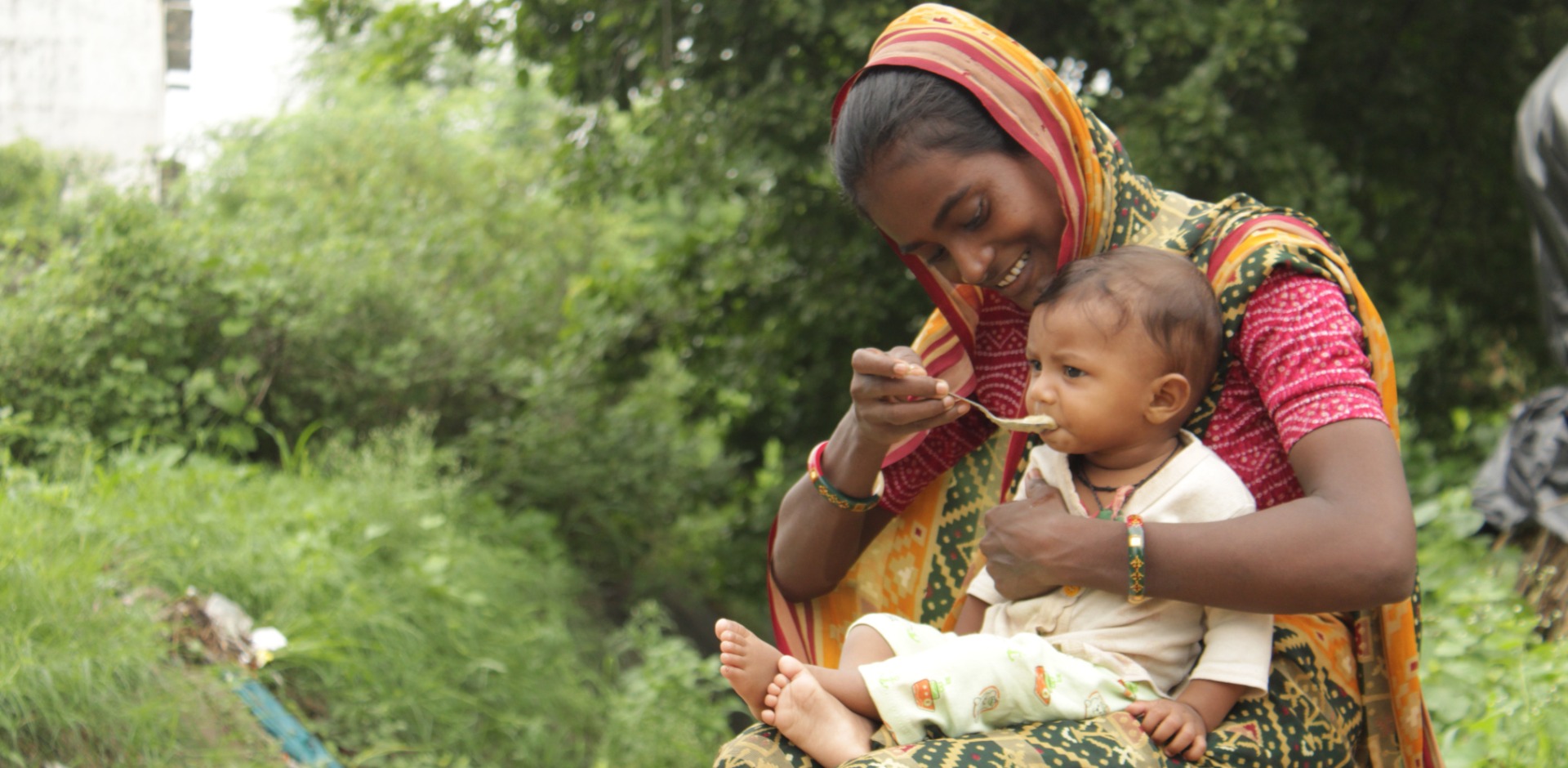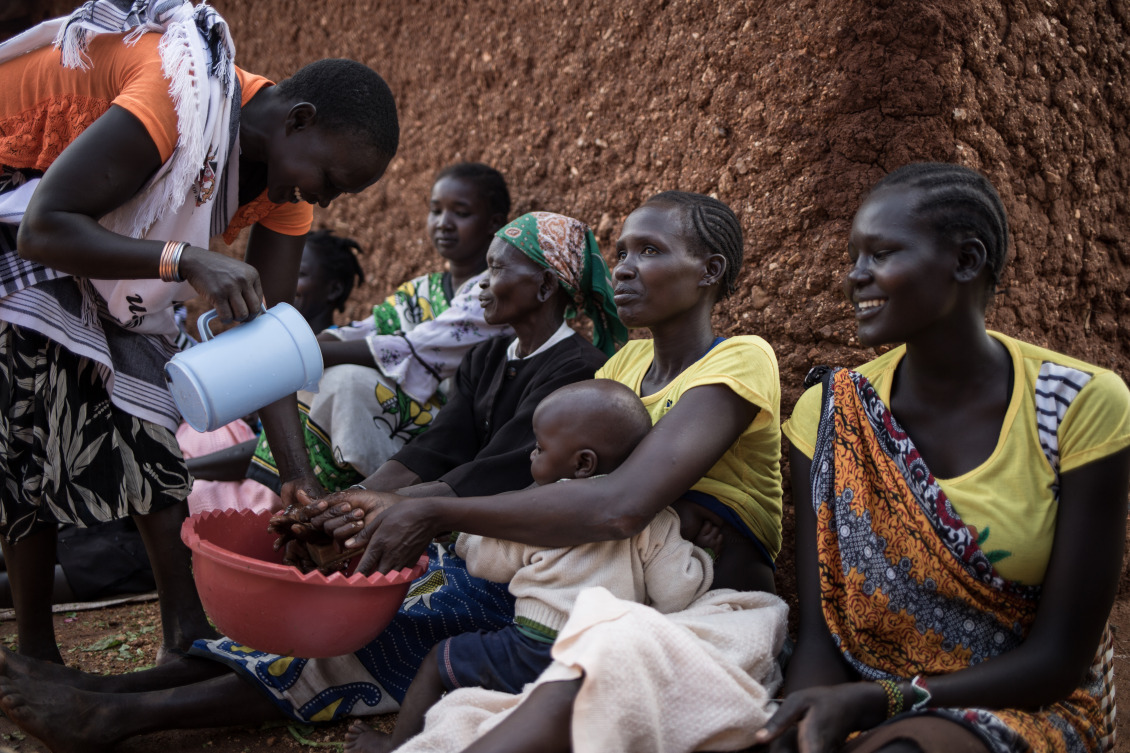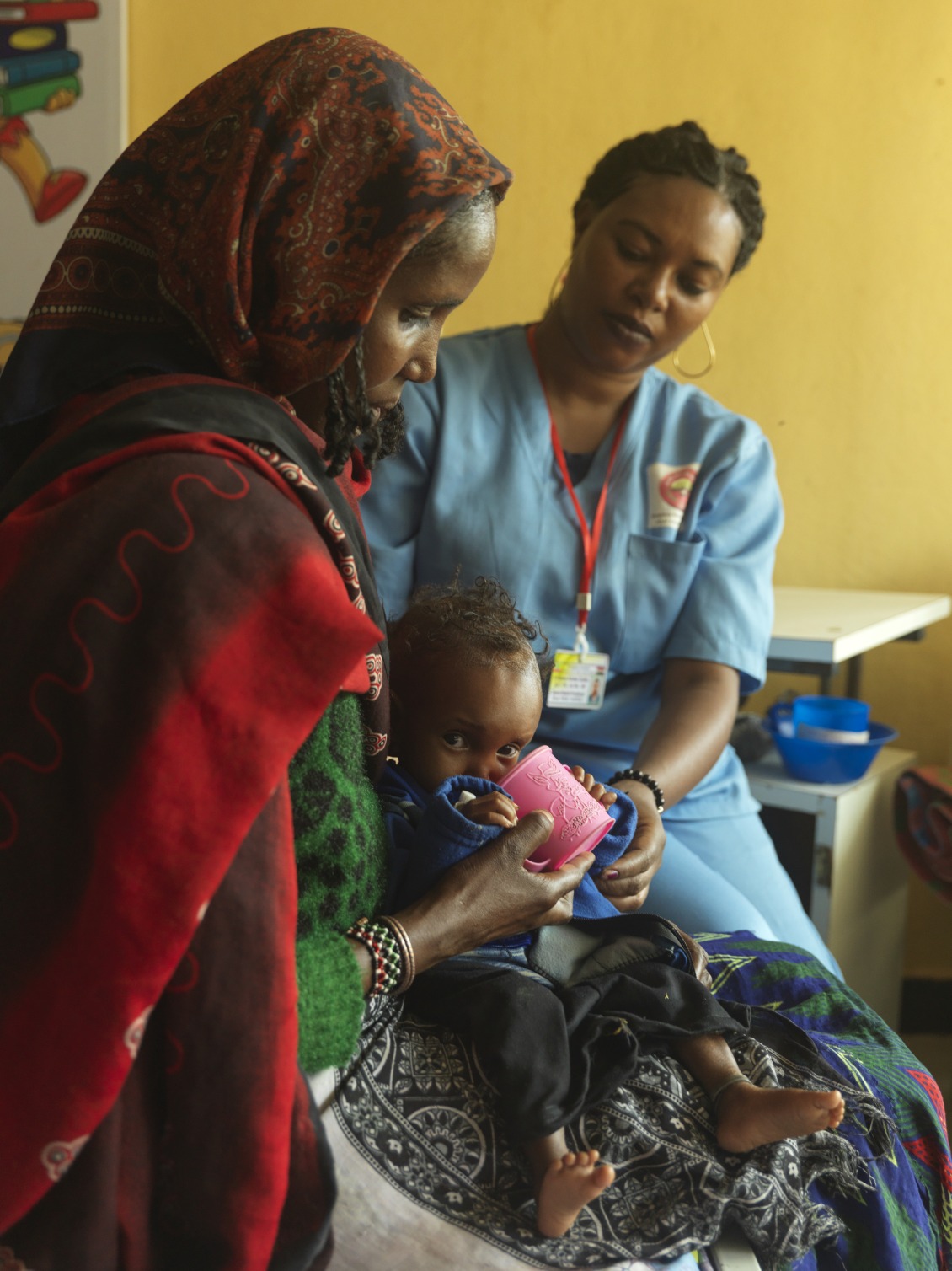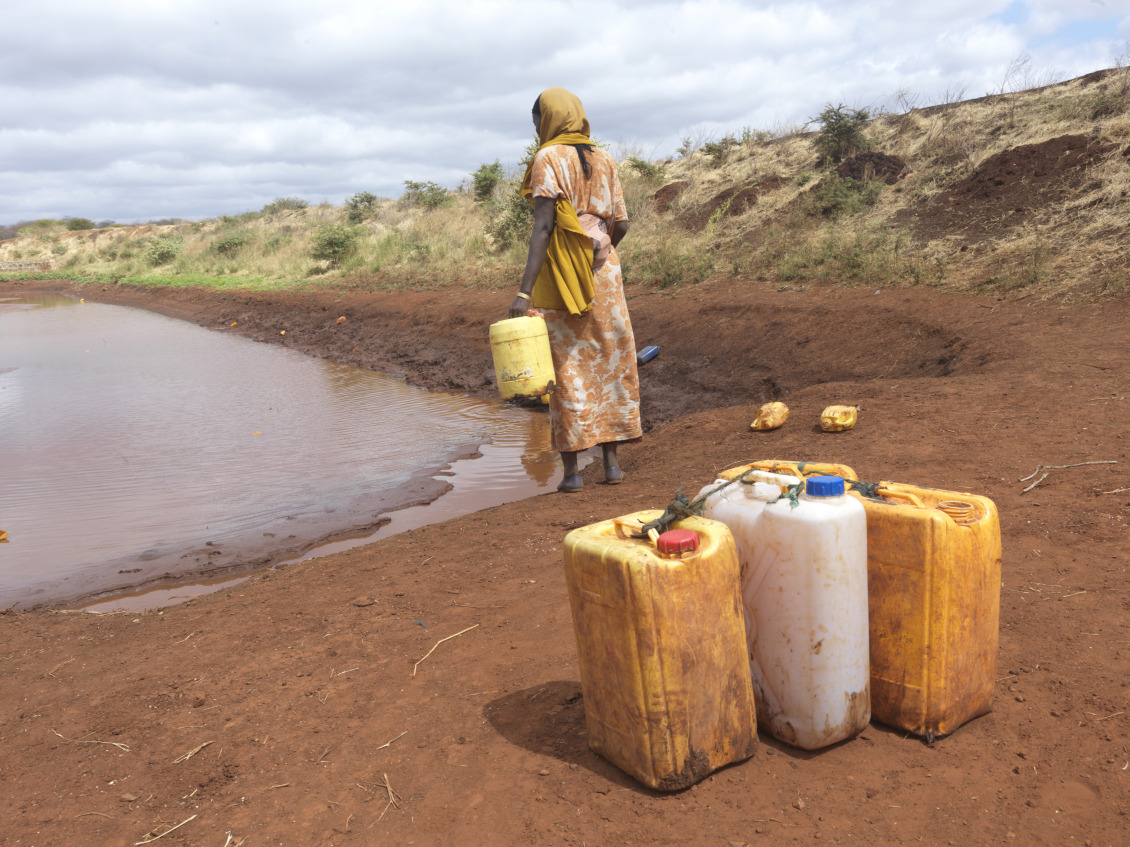
This Holiday Season, Give the Gift of Hope

UN Pledging Event brings in only one-fifth of goal
32 million people across the Horn of Africa are in desperate need of support. They’re suffering from intense drought—the region’s worst in 40 years—followed by a period of flash flooding that destroyed what little crops were left. Families in Ethiopia, Somalia, and Kenya have been forced to tirelessly walk across borders, exhausted and malnourished, seeking a chance at life. They’ve lost their livelihoods, their homes, and in many instances, their lives. Last year, the conditions resulted in the deaths of 43,000 Somalis—half of them children under five.
Conflict has also driven the hunger crisis. In Somalia, armed groups have displaced 3.8 million people. In Ethiopia, communities are still recovering from a two-year war in Northern Ethiopia. And throughout the region, intercommunal conflicts are forcing people from their home. The ongoing economic fallout from the war in Ukraine continues to place affordable food further out of reach for families.
Despite the crisis in the Horn, emergency funding has fallen short. A UN Pledging event on May 24 in New York aimed to raise $5 billion for the region—all of which would go towards urgent support. But less than $1 billion was actually raised, leaving mothers and children alike to go to bed each night hungry and brace themselves for another day of catastrophe.

“Every day, families in the Horn are engulfed by the overwhelming burden of hunger,” said Keith Doyle, our Country Director for Kenya. He added that people across the region are facing a continuous cycle of adversity. “Just as they strive to recover from one crisis, they are swiftly confronted by additional challenges such as prolonged drought, unpredictable weather patterns, floods, infestations, vector and water-borne diseases, and conflict.”
As a global leader in the fight against food insecurity, Action Against Hunger is urging the international community to take a stand and halt the crisis. Our teams are working in Kenya, Somalia, and Ethiopia to respond to communities in need.
Kenya
After what felt like an eternity of drought, some Kenyans were hopeful about the predictions of rain. But for some, the joy was short-lived. In some of the hardest hit drought areas of Kenya, the rains brought dangerous flash flooding. Homes have been destroyed, infrastructure is crumbling, and many people have lost their lives.
In other counties, however, drought conditions are prevailing, and the pastoral communities are left without their livestock and fertile land. Since last July, the number of people experiencing food insecurity has skyrocketed from 3.5 million to 4.4 million people, or 10% of the country’s population. Around 800,000 are in the Integrated Food Security Phase Classification, or IPC, Phase 4, an emergency level that typically signals oncoming famine. IPC is a UN classification system that uses analytical tools and procedures to determine the severity and magnitude of food insecurity and malnutrition. In June, Kenya’s food insecure population could rise by another million.

Children are especially at risk—nearly one million children under five years of age are currently malnourished. They’re unable to access adequate food sources or healthcare facilities.
Our teams are on the ground responding to the emergency. Since many Kenyans watched their livestock die during the drought (amounting to over 2.5 million livestock deaths) we’ve supported a government of Kenya initiative—with funding from the U.S. Bureau for Humanitarian Assistance (BHA)—to vaccinate cattle, goats, and camels to safeguard them from future diseases.
We’re also planning in advance for the emergence of life-threatening diseases. The flash floods have heightened the threat of waterborne diseases and cholera, so we’re training community volunteers to manage illnesses and doubling our healthcare responses across the region.
Another grant, funded by the Swedish International Development Cooperation Agency (Sida), will help us provide flood affected communities with necessities and support. In Mandera and its surrounding communities, our team will adopt a multi-pronged approach. We’ll be focusing on water, hygiene, and sanitation (WASH) initiatives, which will include repairing boreholes and ensuring that everyone has access to drinking water. We’ll be distributing jerrycans, hygiene kits, and other non-food items. Our teams will continuously focus on gender equity and prioritize the specific needs of women in all our responses.
Finally, we’ll prioritize an elevated mental health response. We are committed to acknowledging and addressing the hardships that each community has faced, and our aim is to instill a renewed sense of hope and resilience to carry on.

Our teams have been on the ground in Kenya for nearly twenty years. Last year, we helped nearly 1 million people. We’ll continue to ensure access to healthcare, supply clean water and sanitation, combat malnourishment, help farmers and pastoralists rebuild livelihoods, and spread key information about health and nutrition.
Somalia
Last year, tens of thousands died in Somalia after experiencing famine-like conditions. Most of the deaths were children.
The situation has only grown worse. Today, 6 million are hungry, and only 26 percent of the Humanitarian Response Plan has been funded.
Many Somalis have no home to call their own. In the next six months, 1.4 million will likely be displaced by floods, drought and conflict. The flocks of people seeking shelter will put an immense strain on displacement camps and countries that are already overwhelmed by existing needs. In camps across the country, people live in unsanitary and often unsafe conditions. Diseases spread quickly, food is scarce, and death is an ever-present reality.
Somalia’s crisis is largely caused by conflict, which has prevented people across the country from tending to their farms and livestock. Armed robberies and kidnappings also affect the region, dismantling entire communities and forcing swarms of people to seek safe passageways to camps for Internally Displaced Persons (IDPs). Conflict continues to be the world’s primary drivers of food insecurity. Last year, over 85% of the 258 million people facing crisis or worse levels of food security in 58 countries lived in countries affected by conflict.
Flash flooding has also reached Somalia. The heavy rains have displaced 400,000 people, and the flooding has triggered dangerous outbreaks of cholera. According to the latest data from the Ministry of Health, there are already over 4,000 suspected cases of cholera.

“Families are forced to make very difficult decisions in order to survive,” said Ahmed Khalif, our Country Director for Somalia.
But they don’t have to make these decisions alone. Our team is on the ground, facing hunger head on. We’re working alongside key partners in the Building Resilient Communities in Somalia (BRCiS) Consortium to implement a 10 million dollar drought assistance and resilience program. The program is funded by the U.S Agency for International Development (USAID), the Foreign Commonwealth and Development Office (FCDO), and the Qatar Fund for Development (QFFD).
Throughout the country, we’ll continue to improve access to clean water, provide lifesaving vaccination, run cholera treatment centers, promote hygiene, support people through cash transfers, and kickstart innovative agriculture programs. Our team has been in Somalia since 1992, and last year alone, we supported nearly half a million people.
Ethiopia
Following climate shocks, economic crises, and a two-year war in Northern Ethiopia, 20 million Ethiopians were in need of urgent humanitarian assistance in 2022. Nearly 75% were women and children, and over 5 million were left internally displaced. Many districts were teetering on famine until last November’s ceasefire, when humanitarian organizations were once again able to deliver aid.
The war has ended, but conditions are improving extremely slowly. 6 million are still completely reliant on food aid.
Ethiopia is one of the most drought-prone countries in the world. After three years and several failed rainy seasons, people are desperate for clean, safe water. The most vulnerable populations were completely reliant on agriculture. Now, they must face failed harvests, and empty bowls.

Our teams have been implementing lifesaving programs throughout Ethiopia since 1985, and we’re still on the ground today. We serve refugees and internally displaced people alike. Our priorities include increasing access to safe water and sanitation, treating malnutrition, promoting agriculture, operating critical healthcare facilities, ensuring protection, and teaching communities about health and nutrition. Last year, our team helped over 2.9 million people.
Urgent need
Food is a basic human right, yet millions across the Horn do not know where their next meal is coming from. Some days, they might save up for one meal, but other days pass by without so much as a vegetable cooked. In desperate search of food, many embark on dangerous journeys in the hopes of reaching a health center on the horizon.
In 2023, over 345 million people across the world are projected to be food insecure. Yet the rising need is not inspiring rising support. The programs that can save millions of lives are receiving less than half of the money they need.
“The Pledging Conference disappointed government stakeholders and UN officials alike,” said Michelle Brown, our Advocacy Director. “As we talk about the crisis, others are experiencing it firsthand. None of us can imagine the fear that families in the Horn experience every day.”

The UN Secretary-General, Antonio Guterres, is urging immediate action. The drought in the Horn is a direct consequence of climate change—leaving those least responsible paying the highest price. In fact, people in Somalia, Kenya, and Ethiopia contribute to less than 0.1% of global greenhouse gas emissions.
“People in the Horn of Africa are paying an unconscionable price for a climate crisis they did nothing to cause,” said Guterres. “Without an immediate and major injection of funding, emergency operations will grind to a halt, and people will die.”
Guterres made a plea to donors around the world after visiting the region. “I was inspired by their resilience, courage, and determination to rebuild their lives,” he said. “But they cannot do it alone. At this moment of difficulty and danger for the people of the Horn of Africa, we cannot stand idly by. Let us act together now—with greater urgency and far greater support.”
Join our community of supporters passionate about ending world hunger.